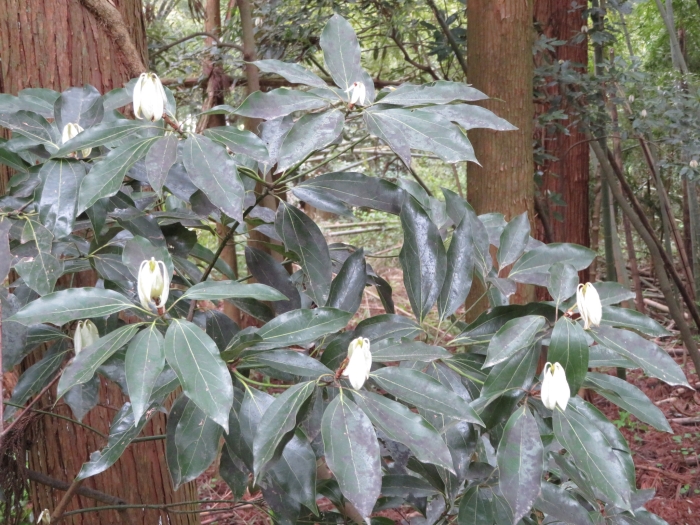Silky Neolitsea
(Neolitsea sericea)
Silky Neolitsea (Neolitsea sericea)
/
/

belvedere04
CC BY 4.0
Image By:
belvedere04
Recorded By:
Copyright:
CC BY 4.0
Copyright Notice:
Photo by: belvedere04 | License Type: CC BY 4.0 | License URL: http://creativecommons.org/licenses/by/4.0/ | Rights Holder: belvedere04 | Publisher: iNaturalist | Date Created: 2019-04-29T12:07:46-07:00 |

























Estimated Native Range
Summary
Neolitsea sericea, commonly known as Silky Neolitsea, is an evergreen tree native to various ecosystems including subtropical forests, forest margins, and slopes in East Asia, specifically China, Taiwan, South Korea, and Japan. It is a medium-sized tree that can reach up to 33 feet (10 meters) in height and is often found in well-developed secondary forests. The tree is characterized by its glossy, lanceolate leaves that are green on the top and distinctly silvery-white on the underside, which adds a unique textural quality to the foliage. It produces small, inconspicuous yellow flowers in the fall, followed by red berries that can attract birds and other wildlife.
Silky Neolitsea is valued for its ornamental foliage and is used in garden landscapes for its contrasting leaf colors. It is suitable for urban planting, border planting, and as a specimen tree. The tree prefers well-drained soils, moderate water, and thrives in full sun to part shade conditions. While it is not commonly available in cultivation, it can be a distinctive addition to a garden with its silvery foliage. Care should be taken when planting Neolitsea sericea as it may require protection from strong winds due to its large leaves. There are no significant disease or pest issues reported, but it is not tolerant of severe frost.CC BY-SA 4.0
Silky Neolitsea is valued for its ornamental foliage and is used in garden landscapes for its contrasting leaf colors. It is suitable for urban planting, border planting, and as a specimen tree. The tree prefers well-drained soils, moderate water, and thrives in full sun to part shade conditions. While it is not commonly available in cultivation, it can be a distinctive addition to a garden with its silvery foliage. Care should be taken when planting Neolitsea sericea as it may require protection from strong winds due to its large leaves. There are no significant disease or pest issues reported, but it is not tolerant of severe frost.CC BY-SA 4.0
Plant Description
- Plant Type: Shrub, Tree
- Height: 15-30 feet
- Width: 3-4 feet
- Growth Rate: Moderate
- Flower Color: Yellow
- Flowering Season: Fall
- Leaf Retention: Evergreen
Growth Requirements
- Sun: Full Sun, Part Shade
- Water: Medium
- Drainage: Medium
Common Uses
Low Maintenance, Potted Plant
Natural Habitat
Subtropical forests, forest margins, and slopes in East Asia
Other Names
Common Names: Silver Neolitsea, Shiro-Damo, Silky Leaved Neolitsea
Scientific Names: , Neolitsea sericea, Camphora glauca, Cinnamomum glaucum, Laurus glauca, Laurus sericea, Litsea glauca, Litsea glauca var. xanthocarpa, Litsea sieboldii, Malapoenna sieboldii
GBIF Accepted Name: